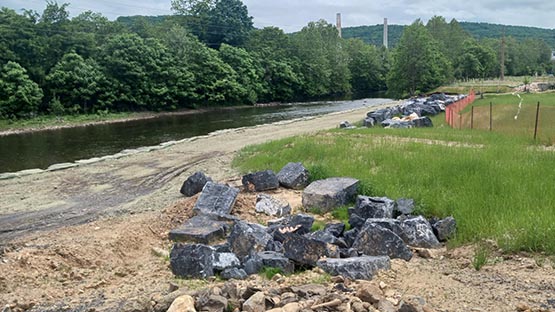With temperatures expected to drop rapidly from the warmth of 60 degree weather for today’s early birds to below freezing for this evening’s night owls , AAA calls on motorists to take preventive measures and be ready for the unexpected.

Here’s a winter checklist for motorists:
Battery. Check for a secure fit and clean away any corrosion on the battery, connectors and cables. Note that at zero degrees, a car’s battery loses about 60 percent of its strength, yet the engines they must start need about two times more power to start. At a comparatively mild 32 degrees, a battery is 35 percent weaker. AAA recommends that if your battery is more than two years old to have it tested by a reliable repair shop.
Antifreeze. Check antifreeze annually to ensure it will withstand the winter cold. A 50/50 mixture of coolant and water will protect against freezing.
Windshield wipers and washer fluid. Replace wiper blades if they do not clear the glass in a single swipe without streaking. Fill the windshield washer reservoir with winter detergent fluid to prevent freeze up.
Tires. Cold weather reduces tire inflation pressure, so check tire pressures frequently and maintain the vehicle manufacturer’s recommended levels. Motorists should never reduce tire pressure in an attempt to increase traction on snow and ice. This does not work and leads to excessive tire wear. Motorists in areas where it snows should make sure their tires have an M&S rating, which means they provide the added traction required in snow. In areas that have heavy snow fall, using snow tires and chains during winter months provides added safety and may be required by local laws. For best results, snow tires should be fitted to all four wheels.
Belts and hoses. Replace accessory drive belts that are cracked, glazed or frayed, as well as coolant hoses that are visibly worn, excessively soft or bulging. Check for leaks around hose clamps and the water pump.
Other important areas to have a certified technician check in preparation for winter include the vehicle’s fluid levels, lights, brakes, exhaust system andheater/defroster. Motorists should also remember to continue regular oil and filter changes at the intervals recommended by the vehicle manufacturer.
AAA also encourages motorists to update their emergency roadside kit for winter to include a mobile phone and car charger; blankets; a flashlight with extra batteries; a first-aid kit; drinking water; a small shovel; a sack of sand or cat litter or traction mats; windshield scraper and brush; battery booster cables; and emergency flares or reflectors.
In addition to basic car maintenance, AAA Mid-Atlantic offers advice for frigid morning start-ups:
Use Your Resources. Use your garage if you have one.
Allow Extra Time. If you must park outside, check your vehicle first thing in the morning. Check to see if the windows are covered with frost and determine if it is possible the door locks are iced over. It may be necessary to allow some extra time to get underway.
Frozen Locks. If the door locks are frozen, carefully heat the end of the key with a match or lighter. A squirt of deicer spray is another quick method, or you can fill a container with lukewarm water and poor it on the lock. This should melt the ice away enough for you to insert a key and unlock the door. Never pour hot water on door locks or windows, as they may crack. Also, don’t try to chip the ice away with your key, as this may damage the key and your vehicle’s finish.
Proper Vehicle Starts. Start the car, making sure the transmission is in park and the brake is set. If the vehicle is inside, open the garage door so carbon monoxide doesn’t build up. Switch the heater to the defrost setting and turn on the rear defroster if you have one.
Work Smarter Not Harder. Allow the vehicle to run for about five minutes. While the vehicle begins to warm up, it will do most of the work of clearing the windows for you. At this point, you should be able to get most of the ice or frost off the windows with a little effort and an ice scraper.
“No one wants to be stranded in the cold by a vehicle breakdown,” said Meade. “Properly preparing your vehicle for winter driving is essential for the safety of all passengers and will greatly decrease the chances of your vehicle letting you down.”










